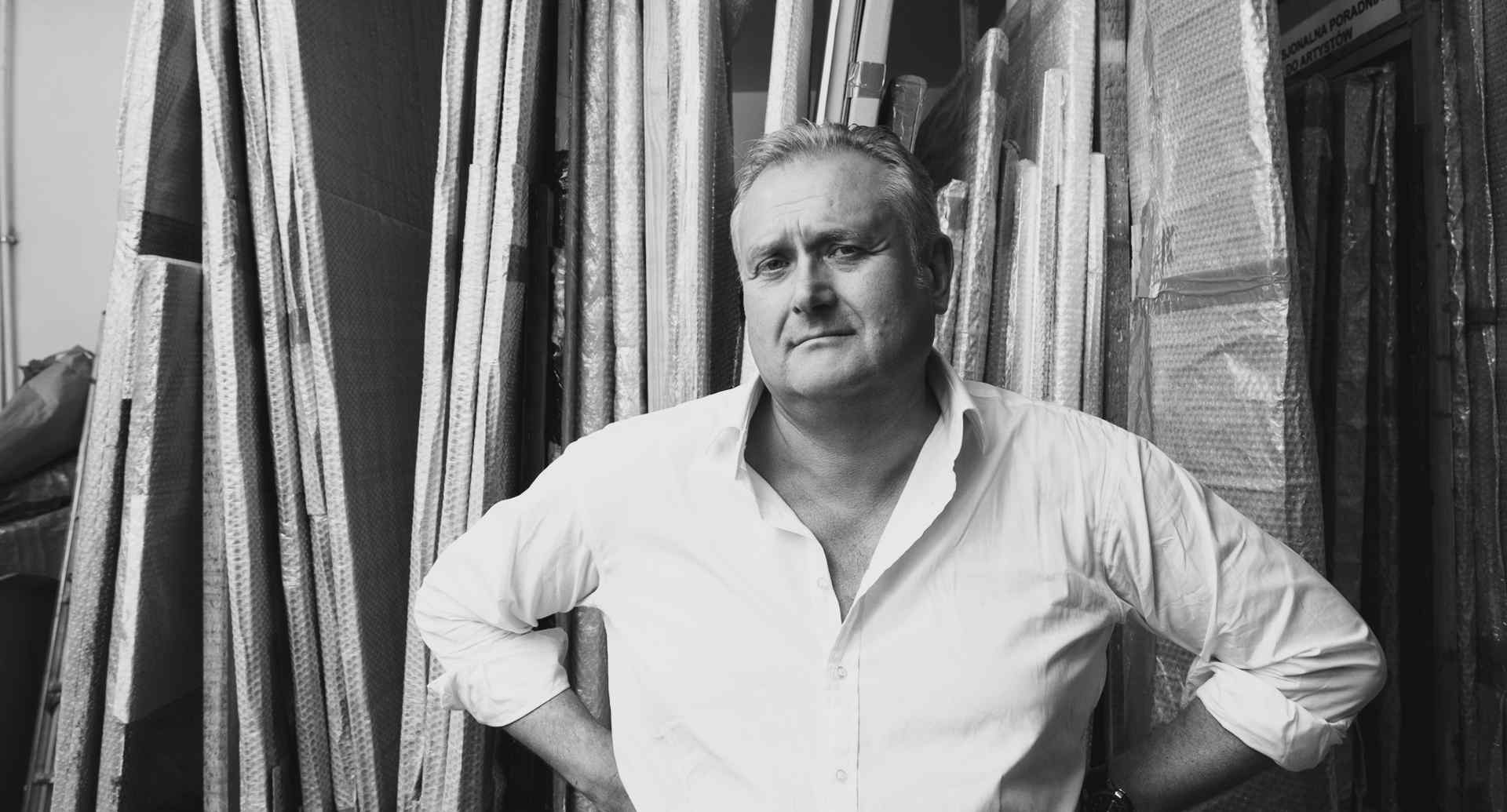Austrian poet and novelist Rainer Maria Rilke, in his introspection of what makes great art, once said, ‘No great art has ever been made without the artist having known danger.’ An idea, rich in depth and complexity, finds a striking resonance with the work of acclaimed Polish artist Paweł Kowalewski, known for his socially engaged commentary on totalitarian regimes, oppression and circumstances of truth through multiple mediums and disciplines.
In the 1980s, Poland, under the shadow of martial law declared in 1981, grappled with a tight blanket of socio-political unrest. This period was marked by economic strife, political oppression, a diverse opposition movement, and an unrelenting struggle against a corrupt and ineffective totalitarian regime.

Photo Credit Jan Zych
© Paweł Kowalewski
I realized that true art is the world seen through the eyes and mind of artists
Paweł Kowalewski
During this turbulent period, Kowalewski was honing his practice at the Academy of Fine Arts in Warsaw under the tutelage of avant-garde artist Stefan Gierowski. Here, Kowalewski began to crystallize his concept of ‘personal art’—private art deeply connected to his personal experiences and intricately linked with the context of the time and its issues.
Within the confines of the Academy of Fine Arts in Warsaw, Kowalewski, alongside peers Ryszard Grzyb, Jarosław Modzelewski, Włodzimierz Pawlak, Marek Sobczyk, and Ryszard Woźniak, formed GRUPPA. This collective defined a new era of expression, ignited by a joint exhibition of their works on the first anniversary of the introduction of martial law in Poland on December 13, 1982.
The group’s work was characterized by bold and brazen, freely flowing expression with themes of satire, irreverence, and nationalism. Their use of dramatic neo-expressionist forms and vivid colours was a potent tool to convey their irritation with Poland’s societal terrain, challenging the status quo and provoking conversations about Polish society, governmental control, its values, and the academic approach to art. GRUPPA became Poland’s most influential artistic collective during the 1980s, marking a significant chapter in its art history.
Poland’s political stance continued to fuel and inform Kowalewski’s practice as he peeled back the fabric of a totalitarian regime, dissecting the multifaceted layers of oppression and the elusive nature of truth. His 1984 piece “Mon Cheri Bolscheviq” depicts the visage of a Soviet special forces soldier, rendered with a striking juxtaposition of passion and apathy. The soldier’s mouth, imbued with a fervent, almost incendiary red, speaks to a hidden zeal or suppressed desire, while the eyes, portrayed with a chilling, dispassionate gaze, reflect the numbing coldness of the regime. Reimagined in 2005 with Putin as the focal point, a piece that some would say aged well considering the situation between Russia and Ukraine, yet that is another story.
Another celebrated work is his 2012 piece “Totalitarianism Simulator,” a terrifyingly haunting installation shrouded in darkness and mystery. It prompts reflection on the dangers of authoritarianism and the importance of safeguarding freedom and democracy. A large cube invites viewers into the soul of totalitarianism’s sinister legacy. Within its shadowed walls, chilling paradoxes of scenes oscillate between moments of joy and the macabre spectacle of bodies suspended by the neck, a grim reminder of the brutal reality of oppressive regimes that have plagued and scarred human history.
Then there’s Kowalewski’s “Europeans Only,” a piece from his “Forbidden” series. A photo taken of a plaque at the Apartheid Museum in Johannesburg in 2007, framed and displayed in a lightbox, showcases a world once torn apart by racial divides. Its bold, exclusionary command, “Europeans Only,” details the dark nature of a fractured past, more than a mere image; it’s a symbol of an era where human beings were segregated, classified, and dehumanized based on the colour of their skin.
Artists often draw from their struggles, pain, and the intensity of their emotions and surroundings. Their depth of experience allows them to create works that connect on a deeper level and bring light to the darkness. Throughout his career, starting in the 1980s, Kowalewski’s practice with GRUPPA marked a bold rebellion against the academic approach to art, embracing an avant-garde stance, with his solo work manifesting a richness in rebelling against the oppressive realities of the time consistently pushed the boundaries of what was deemed acceptable in Soviet art, courageously opening up new forms of artistic exploration at a time when expressing or depicting the wrong idea could lead to dire consequences.
At the heart of Kowalewski’s practice was a fearless pursuit of truth as he ventured into the uncharted territories of the human experience, confronting the abyss of fear to challenge entrenched ideals of communist governance and harnessed the transformative power of art as a vehicle for social change and personal liberation.
Kowalewski’s work served as both a form of resistance and a powerful critique of humanity, society, ignorance, and fear. In an interview two decades ago, Kowalewski said, “Real art must be rebellious!” This statement encapsulates the relentless quest to challenge, provoke, and inspire as an artist in the face of adversity. We managed to catch up with Kowalewski as he exhibited his “Totalitarianism Simulator” at the Museum of Photography in Krakow on the anniversary of martial law in Poland to learn about his practice and more.
Hi Pawel, please introduce yourself to those unfamiliar with your work and share your journey into the arts. How did your time at the Faculty of Painting at the Academy of Fine Arts in Warsaw and Stefan Gierowski’s mentorship shape your artistic perspective?
Paweł Kowalewski: My name is Pawel Kowalewski, and at the age of 23, I realized that true art is the world seen through the eyes and mind of artists. That’s how I came up with something I called personal art, meaning private. For over 40 years, I have practically not changed my mind and still believe that this is what true art is about, regardless of the medium used. I think that it was precisely Gierowski’s workshop that was the best place in Poland at the time, where my artistic personality was shaped.
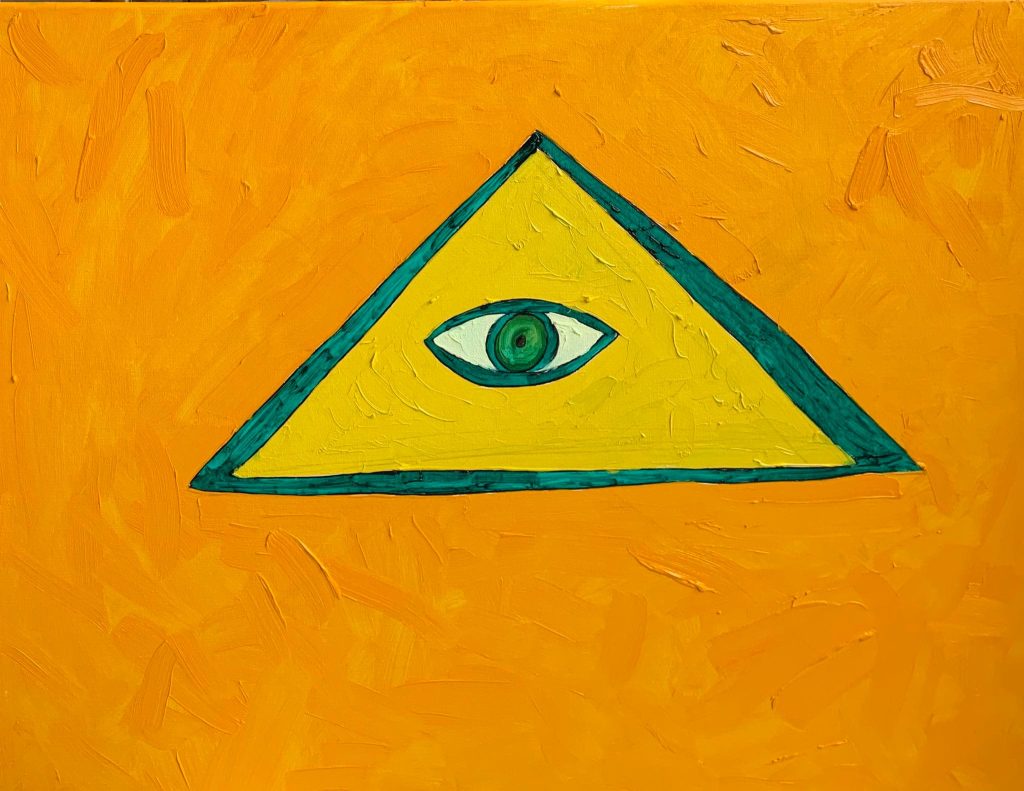
oil on canvas, 80 x 100 cm, 2020
© Paweł Kowalewski
After graduating from the Warsaw Academy of Fine Arts, you co-founded the artist collective Gruppa with figures like Ryszard Grzyb and Jarosław Modzelewski, debuting on Poland’s martial law anniversary in 1982. What inspired you to form Gruppa, and how was it received within Poland’s art community at that time?
Paweł Kowalewski: It was still during my studies. I was working on my diploma then, and together with Ryszard Woźniak; we decided to create an artistic platform that was supposed to be an open form to which various artists could join. Over time, this evolved into GRUPPA, which is one of the most important artistic groups of the 1980s in Poland. Our openings were crowded, and the legend of our performances was so widespread that it even caught the attention of the communist secret police. We felt like a rock ‘n’ roll band that had a lot of fans and imitators. During that time, we did a tremendous number of exhibitions and performances.
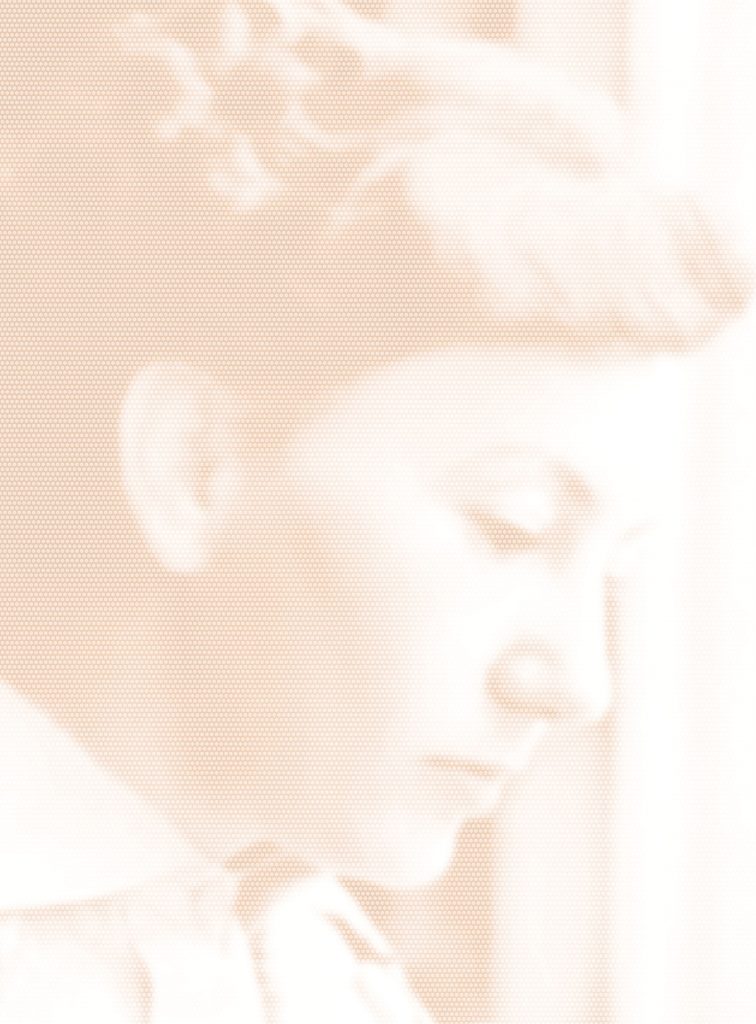
Strength and Beauty – Fela
(offset print on dibond, 200 x 140 cm) 2015
© Paweł Kowalewski
How did the sociopolitical climate of 1980s Poland shape your artistic expression and visual language?
Paweł Kowalewski: It was of fundamental importance. As I said, personal art is the sensitivity of the artist through which facts pass, and the facts at that time, to put it mildly, were not too friendly. The whole wildness of our rebellion against the oppressive reality found its expression in our paintings and performances.
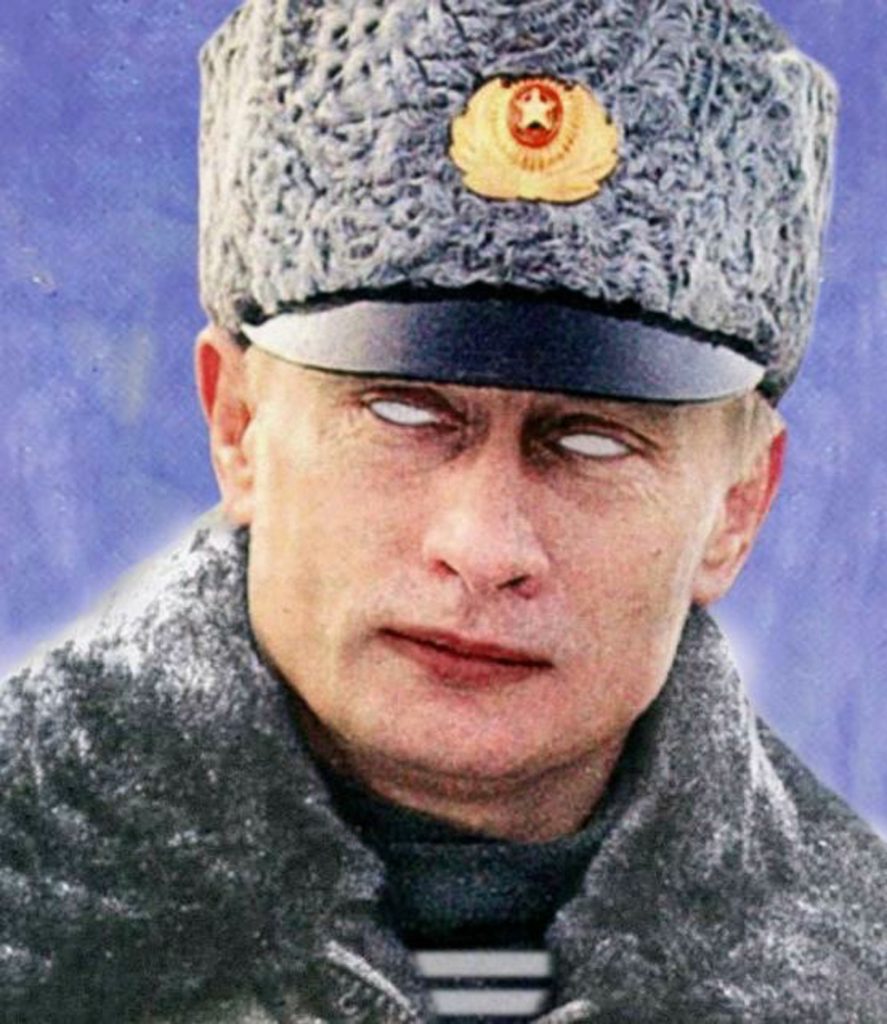
© Paweł Kowalewski
From painting to sculpture and installations, your practice often explores themes like totalism, religion, and socio-politics. Could you discuss your approach and inspirations and the importance of these themes in your art?
Paweł Kowalewski: I think that the experiences of my youth had a very strong influence on my attitude towards totalitarianism and everything related to oppression or attempts to control human freedom.
Your influential installation, ‘Totalitarianism Simulator,’ opening on December 13th, is a large, darkened cube where viewers enter and are confronted with the dark heritage of totalitarian systems alongside scenes of everyday life. Could you elaborate on this piece’s significance?
Paweł Kowalewski: This work is already 11 years old and has not lost any of its relevance. I can even say that, unfortunately, it has not lost but rather gained relevance. In 2012, people leaving the Simulator asked me why I do this. Today, in the face of the war in Ukraine, authoritarian governments in Poland, thankfully past but still existing in Hungary, and threatening many countries in Europe and even the United States, no one asks such a question anymore. We must be prepared for totalitarianism to try to disrupt our peaceful existence and not deceive ourselves that they will stop at that.

© Paweł Kowalewski
Photo Credit Jan Zych
What is the key message or impact you hope to leave with those who experience ‘Totalitarianism Simulator’?
Paweł Kowalewski: The key message is that we are always alone in the face of totalitarianism; no one will help us in making decisions. In solitude, we must decide whether to fight or adopt a conformist attitude. I think many people over the last 11 years may have realized this.

(left) fragment 9 (right) fragment 8
© Paweł Kowalewski
Can we discuss “Europeans Only”, another influential work of yours that documents various bans and orders encountered during your travels? How do you think it reflects or challenges the viewer’s understanding of historical totalitarian ideologies and racism?
Paweł Kowalewski: “Europeans Only” is a completely different work from the series “Forbidden“. It’s a photo made in the Apartheid Museum in Johannesburg, South Africa, which in 2002 seemed to be confined to a museum. Since that time, the significance of this symbol has changed drastically, and, unfortunately, I think that this is not the end of the return of racism, not only to Europe but to all of humanity.
As we commemorate the anniversary of martial law in Poland, could you reflect on the evolution of the artistic and societal landscapes since then and how martial law’s history has influenced contemporary art and society within Poland?
Paweł Kowalewski: I think that the introduction of martial law over 40 years ago in Poland was an experience of my generation that somehow shaped our worldview and our art. From the perspective of today’s youth and art, it may seem distant and perhaps even insignificant, but it was from this lost battle that the freedom of Europe and systemic changes in Russia began. I think it also made artists realize how important freedom and freedom of expression are.
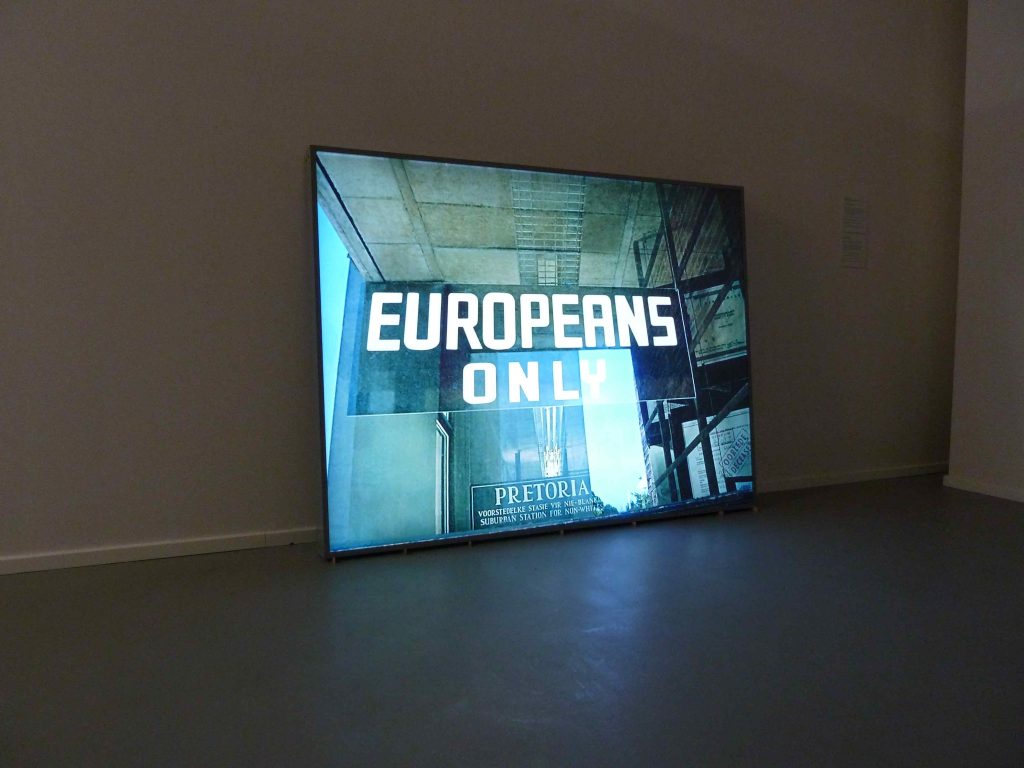
Europeans Only, (lightbox, 150 x 200 cm) 2012
© Paweł Kowalewski
Reflecting on your extensive career, which works or projects do you find most impactful, and why?
Paweł Kowalewski: Most likely, like every artist, I should answer that it will be the very work that I am creating at this moment, and I hope it will be a work that has strength and power. However, seriously, the most frequently exhibited of my works, besides “Europeans Only” or the disappearing portraits of 10 women under the title “Strength and Beauty,” is also the painting “Mon Cheri Bolsheviq“, which, as early as 1984 drastically warned against naive love for Russia.
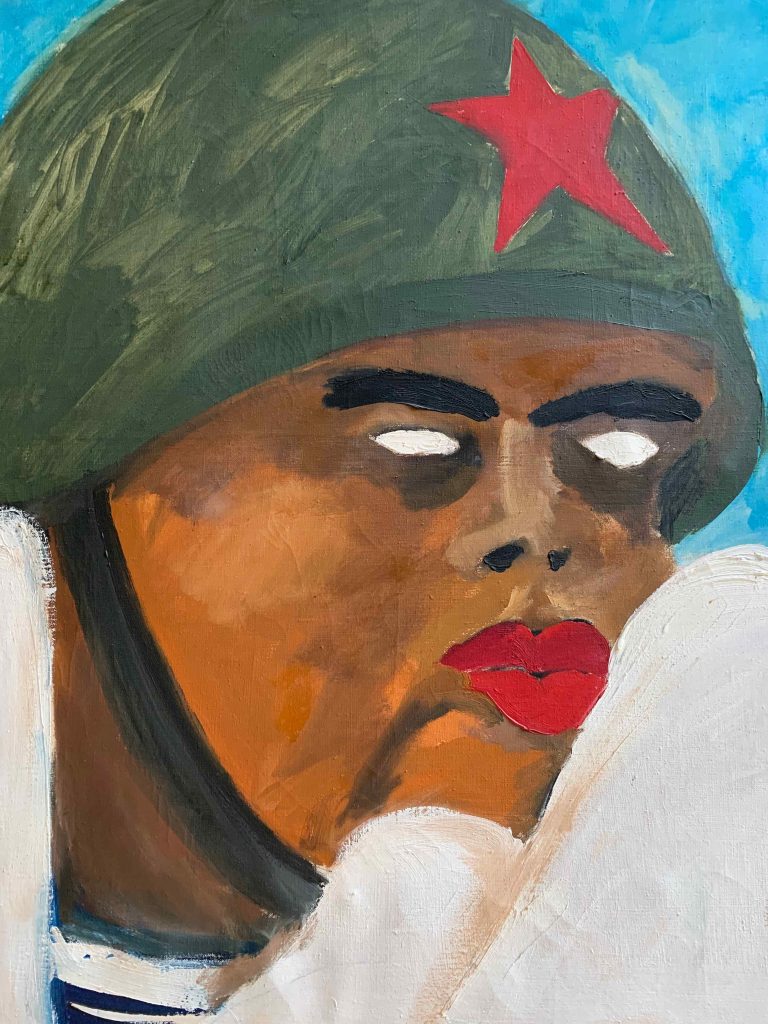
© Paweł Kowalewski
As an evolving artist, what new themes or directions are you exploring for your future art?
Paweł Kowalewski: Currently, a large retrospective is being prepared in Poland, where I intend to show completely new works, such as those dealing with my personal reckoning with my origins. These will include sculptures, photographs, and oil paintings. However, the theme remains unchanged; I am still fascinated by the more or less oppressive reality in which we live, and in my naive belief, I still hope that evil can be avoided, or at least warn against evil, but certainly, the world can be changed through art.
Lastly, what does art mean to you?
Paweł Kowalewski: Art is my love, but like every love, sometimes it is capricious, sometimes it kicks in the legs, sometimes it gets offended, gets annoyed, and that’s exactly how it should be. That’s exactly how I love it – not lying on the couch, beautiful and smelling nice, but sometimes angry, sometimes ugly, and even sometimes quarrelsome. That’s exactly how I understand true art.
©2023 Paweł Kowalewski


